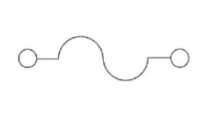Electricity Exam review SNC1W1
1/48
There's no tags or description
Looks like no tags are added yet.
Name | Mastery | Learn | Test | Matching | Spaced |
|---|
No study sessions yet.
49 Terms
electric charge
is a form of charge, either positive or negative, that exerts an electric force.
static electricity
is an imbalance of electric charge on the surface of an object.
induced charge separation
When a charged object is brought near a neutral object, it causes (induces) the electrons to shift position.
charging by friction
Occurs when two different neutral materials are rubbed together or come in contact and electrons are transferred from one object to the other.
grounding
involves removing the excess charge by transferring electrons between the object and a large neutral object such as the Earth (the ground).
conductor
a material that lets electrons move easily through it.
fair conductor
Also called semi-conductor; allow electrons to move through them with a small amount of difficulty.
insulator
a material that does not easily allow the movement of electrons through it.
electrical energy
the energy that is provided by the flow of electrons in an electric circuit.
current electricity
the measure of the rate of electron flow past a given point in a circuit.
potential difference
also called voltage, is the difference in electric potential energy per unit of charge measured at two different points (across a load, meaning either side of it).
resistance
the ability of a material to oppose the flow of electric current.
Why induced charge separation occurs
When a charged object is brought near a neutral object, it causes the electrons to shift position. If the charged object is negatively charged, it repels the electrons in the neutral object so that the half of the neutral object closest to it becomes positive and the half furthest from it is negative. If the charged object is positively charged, the opposite happens.
Law of Electric Charges
Objects that have opposite charges attract each other.
Objects that have like charges repel each other.
Explain electron transfer by friction
For wool and nylon, both objects start off neutral. When they become charged by friction, the wool has a greater hold on electrons than nylon does. Therefore, some electrons are transferred from the nylon object to the wool object. In the process, the wool object becomes negatively charged (gains electrons) and the nylon object becomes positively charged (loses electrons).
Positively charged rod and neutral pith ball
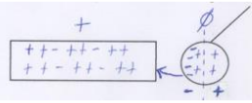
Good conductor examples
mercury, silver, aluminum, gold, copper, and iron.
Insulator examples
Glass, plastic, paper, rubber, wax
Fair conductor examples
Graphite, silicon, salt water, earth, nichrome
Energy Source
Provides electrical energy; can be a battery or a wall outlet that receives energy from a generating station.
Load
A device that transforms electrical energy into other usable forms of energy, such as a light bulb, TV, dryer, or fridge.
Switch
Controls current flow in an electric circuit; when 'on', the circuit is closed, allowing electron flow; when 'off', the circuit is open, stopping current flow.
Connecting Wires
Join all parts of a circuit together and provide a pathway for electrons to flow, usually made of insulated copper or aluminum.
Cost of Electricity (Off-Peak)
7.4 cents/kW•h.
Cost of Electricity (Mid-Peak)
10.2 cents/kW•h.
Cost of Electricity (Peak)
15.1 cents/kW•h.
Off-Peak Time Periods
1) Weekends; 2) Statutory holidays; 3) Night time on weekdays (7PM to 7AM).
Electricity Savings
You save money ONLY when using electricity during off-peak time periods.
Conserving Electricity (Major Appliances)
Only use major appliances when you have a full load to save energy.
Conserving Electricity (Natural Light)
Use natural light during the day instead of turning on overhead lights.
Conserving Electricity (Unplugging Devices)
Unplug electronic devices when not in use or use a power bar and switch it off.
Conserving Electricity (LED Lighting)
Switch to LED lighting as it is much more efficient than old incandescent bulbs.
equation for cost of electricity
Cost = Power x rate x time (Power should be in kW and time should be in hours)
factors that affect resistance
type of material(conductors have low resistance)
cross sectional area(thicker have less)
length(longer have more)
temperature(higher have more bc atoms move faster)
Calculation of Voltage, Current and Resistance
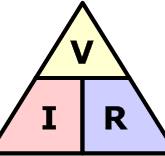
Calculate resistance using rise/run
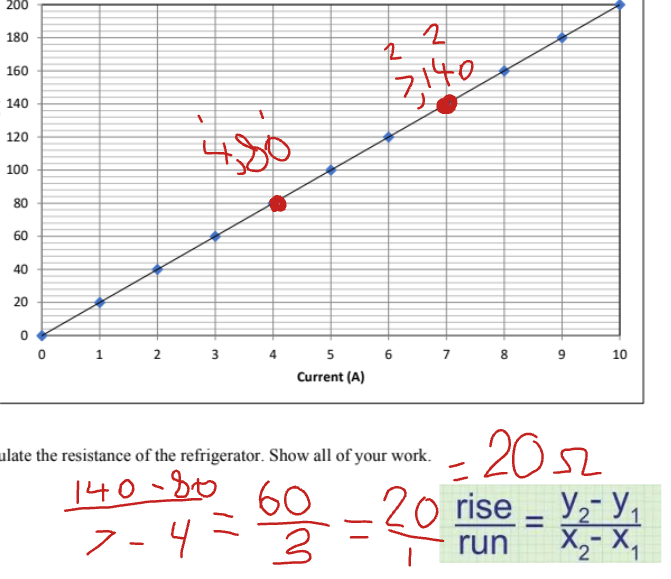
Electric cell

three-cell battery
(draw a short and small for # of cells)

AC power supply

variable DC power supply

Connecting wire

Switch
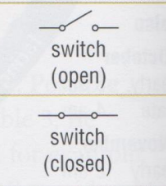
lamp

electric motor

Resistor

ammeter
Connected in series before the first load

voltmeter
connected in parallel with the load it is measuring.

ohmmeter

fuse
